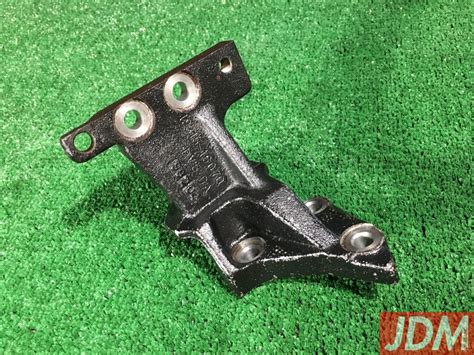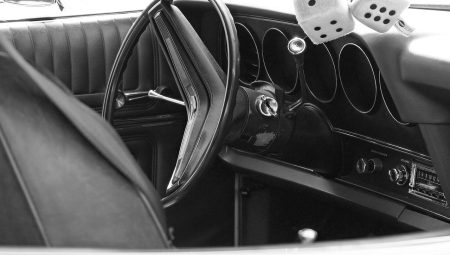Discover the role and maintenance of engine mounting brackets, their importance, common types, and signs of potential issues for optimal vehicle performance.When it comes to the smooth operation of your vehicle, the engine mounting bracket plays a crucial but often overlooked role. This essential component secures the engine to the vehicle’s frame, absorbing vibrations and minimizing noise for a better driving experience. Without a well-functioning engine mounting bracket, your vehicle can suffer from significant performance issues and even safety hazards. In this blog post, we’ll delve into the core aspects of engine mounting brackets, exploring their importance, common types, signs of potential issues, and tips for proper maintenance. Whether you’re a seasoned mechanic or a curious car owner, understanding engine mounting brackets will empower you to keep your vehicle running smoothly and efficiently. Let’s get started!
What is an Engine Mounting Bracket?
An engine mounting bracket serves as a crucial component in the automotive world, acting as the vital link between the engine and the vehicle’s frame, securing the powertrain while absorbing vibrations and minimizing engine movement during operation.
Primarily crafted from resilient materials such as metal or reinforced polymer, these brackets are designed to endure significant stress and ensure a stable connection, ultimately playing a pivotal role in the overall functionality and performance of a vehicle, as they not only support the engine’s weight but also align it correctly in relation to the transmission and other drivetrain components.
When installed correctly, the engine mounting bracket provides a sound foundation for the engine to operate efficiently, thereby contributing to enhanced driving performance, decreased noise levels, and prolonged engine life, while simultaneously reducing wear and tear on adjoining components, making it an essential element that should not be overlooked on any vehicle maintenance checklist.
The Importance of Engine Mounting
The engine mounting system serves an essential function in any vehicle, as it plays a crucial role in securely holding the engine in place while absorbing vibrations and shocks generated during operation, thereby enhancing both performance and ride comfort. Without a well-designed and properly functioning engine mounting system, the engine could move excessively, leading to misalignment of critical components and potential catastrophic failures that could compromise not only the vehicle’s operational efficiency but also the safety of its passengers.
Moreover, effective engine mounting is integral to maintaining the overall integrity of a vehicle, as it ensures that the engine remains properly aligned with other critical systems such as the transmission, drive shafts, and exhaust components, thereby contributing to smoother operation and improved handling characteristics. If the engine is inadequately supported, it could cause undue stress on surrounding parts, leading to a cascade of mechanical failures that might necessitate costly repairs or, in severe cases, total vehicle replacement.
In addition to stability and alignment, engine mounting also plays a role in noise, vibration, and harshness (NVH) control, which is particularly important for enhancing the overall driving experience; modern vehicles are engineered with driver and passenger comfort in mind, making effective engine mountings a pivotal aspect of automotive design that directly impacts how occupants perceive and enjoy the journey. Therefore, it is paramount to ensure that the engine mounting system is regularly inspected and maintained to prevent excessive wear and tear, ensuring longevity and reliability for the vehicle.
Common Types of Engine Mounting Brackets
Engine mounting brackets play a crucial role in securing the engine to the vehicle’s chassis, and understanding the common types of engine mounting brackets is essential for any automotive enthusiast or mechanics. These brackets can generally be classified into various styles, each designed to accommodate specific vehicles and engine arrangements, ensuring optimal performance and stability during operation.
One of the predominant types of engine mounting brackets is the rubber-mounted bracket, which employs rubber dampers to absorb vibrations generated by the engine, thereby reducing noise and enhancing passenger comfort; this type is commonly found in most modern vehicles, as it effectively balances engine stability and comfort levels. Another widely used category is the solid-mounted bracket, which can provide an extremely stable connection between the engine and the chassis, often seen in performance-oriented applications where minimal movement is essential for maximum power transfer and handling dynamics.
Additionally, you may come across hydraulic engine mount brackets, which utilize fluid-filled chambers to dampen vibrations and minimize engine movement more dynamically, thereby adapting to various loads during operation, and providing a smoother driving experience; these types of mounts are increasingly popular in luxury and high-performance vehicles. Lastly, there are universal engine mounting brackets, which offer flexibility across different applications and are often used in custom builds, ensu
Signs of Engine Mounting Bracket Issues
Engine mounting brackets play a crucial role in securing the engine to the vehicle’s frame, and when these components begin to fail, they can lead to a range of noticeable issues that can affect both performance and safety; thus, it is essential for drivers to be vigilant and aware of the signs of engine mounting bracket issues to prevent more serious problems down the line.
One of the most prominent signs of engine mounting bracket issues is an increased amount of vibration felt inside the cabin during operation, particularly when accelerating or decelerating, as this abnormal shaking often indicates that the engine is no longer being held securely in place, leading to an uncomfortable driving experience that may escalate if not addressed promptly.
Another clear indication of trouble is the presence of unusual noises, such as clunking or thumping sounds that occur when the vehicle is in motion, especially over bumps or during gear changes, indicating that there is excessive movement of the engine due to degraded or broken mounting brackets, which should never be ignored as they can lead to significant wear and tear on neighboring components.
Additionally, it’s worth noting that if you see any visible signs of wear, such as cracked rubber insulators or detached brackets on a routine inspection, this can also signify the need for immediate attention; therefore, keeping an eye out for these visual cues along with listening for strange sounds and feeling for unwanted vibrations can help in maintaining a healthy vehicle.
In summary, being aware of the signs of engine mounting bracket issues—including increased cabin vibration, unusual sounds, and visible wear—will empower vehicle owners to take proactive measures, ensuring not only the longevity of their engine but also the overall safety of their driving experience.
How to Properly Maintain Engine Mounting Brackets
Maintaining your engine mounting brackets is crucial for ensuring the longevity and effectiveness of your vehicle’s engine support system, as these components play a vital role in absorbing vibrations and securing the engine in place, thereby preventing possible damage to both the engine and the chassis. Proper maintenance involves routine inspections, as well as addressing any signs of wear or damage promptly, which can ultimately save you significant costs on repairs and enhance your vehicle’s performance over time.
One of the key aspects of maintaining engine mounting brackets effectively is to regularly check for visible signs of deterioration such as cracks, rust, or excessive wear on the rubber bushings, and engaging a qualified mechanic to perform a thorough inspection will provide a better understanding of the condition of these brackets; in addition, you should make sure that mounting bolts are properly tightened to the manufacturer’s specifications, as loose bolts can lead to misalignment or movement of the engine.
Furthermore, it is advisable to consider using high-quality engine fluids and avoiding overloading your vehicle, as this may cause undue stress on the mounting brackets and other components of the engine assembly; additionally, maintaining a clean engine compartment can prevent dirt and grime from accumulating, which could potentially hinder the performance of engine mounting brackets, ensuring that they remain in optimal condition and ready to support the engine for many miles.
Frequently Asked Questions
What is an engine mounting bracket?
An engine mounting bracket is a structural component that secures the engine to the vehicle’s frame or subframe, providing stability and reducing vibrations.
Why are engine mounting brackets important?
Engine mounting brackets are crucial for maintaining engine alignment, minimizing vibrations, and ensuring optimal performance and safety of the vehicle.
What materials are commonly used for engine mounting brackets?
Engine mounting brackets are typically made from durable materials like steel, aluminum, or composite materials to withstand engine weight and vibrations.
How do I know if my engine mounting bracket needs replacement?
Signs that an engine mounting bracket may need replacement include excessive engine movement, noticeable vibrations, unusual noises during acceleration, or visible cracks.
Can I replace an engine mounting bracket myself?
Yes, if you have the right tools and mechanical knowledge, you can replace an engine mounting bracket yourself; otherwise, it’s advisable to seek professional help.
What are the consequences of a damaged engine mounting bracket?
A damaged engine mounting bracket can lead to misalignment, increased vibrations, potential damage to the engine or other components, and compromised vehicle safety.
How can I maintain my engine mounting brackets?
Regular vehicle inspections, ensuring that engine mounts are securely attached, and replacing them at the first sign of wear can help maintain engine mounting brackets.





